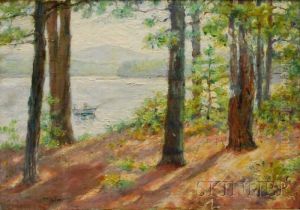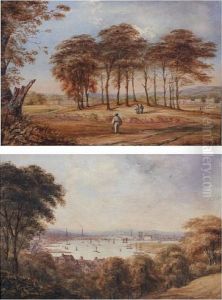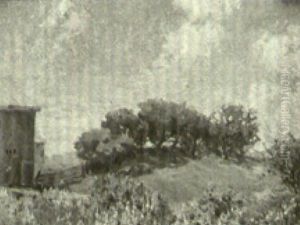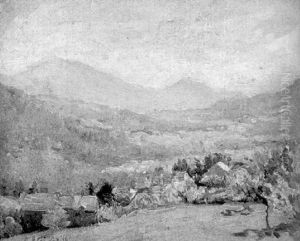Mary Bacon Jones Paintings
Mary Bacon Jones was an American artist and designer, known especially for her contributions to the Arts and Crafts Movement in the United States. Born in 1870, her life and work spanned a pivotal time in American art, reflecting a transition from Victorian sensibilities to more modernist approaches.
Jones was born into an era when the Arts and Crafts Movement, which originated in Britain, was gaining traction in America. This movement emphasized handcraftsmanship, the beauty of natural materials, and an aesthetic that rebelled against the mass production of the Industrial Revolution. Mary Bacon Jones embraced these ideals and became well-versed in a variety of artistic mediums, including watercolor painting, embroidery, and wallpaper design.
While there is not a wealth of detailed information readily available about Jones’s personal life or her artistic training, it is known that she was active during a time when women were beginning to enter the art world in greater numbers. She managed to carve out a niche for herself as a designer, and her work was characterized by its intricate patterns and often featured botanical or nature-inspired themes.
Throughout her career, Jones's designs were highly regarded, and she collaborated with other artists and craftspeople. She created designs for wallpapers and textiles which were both beautiful and functional, aligning with the Arts and Crafts Movement's philosophy that everyday objects should be made with care and artistry.
Mary Bacon Jones's work was part of the broader context of American decorative arts and was exhibited in her lifetime. However, like many women artists of her time, her contributions were often overshadowed by her male counterparts. Despite this, she maintained a successful career and continued to produce art that was in line with the aesthetics and values of the movement until her death in 1950.
Jones's legacy is a testament to the role of women in the Arts and Crafts Movement and the impact of their work on American art and design. Today, her pieces can be found in museum collections and are studied by those interested in the history of American decorative arts and the contribution of women to this field.




